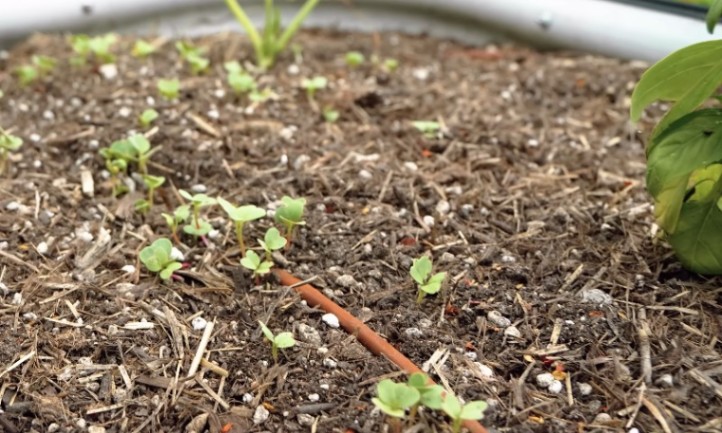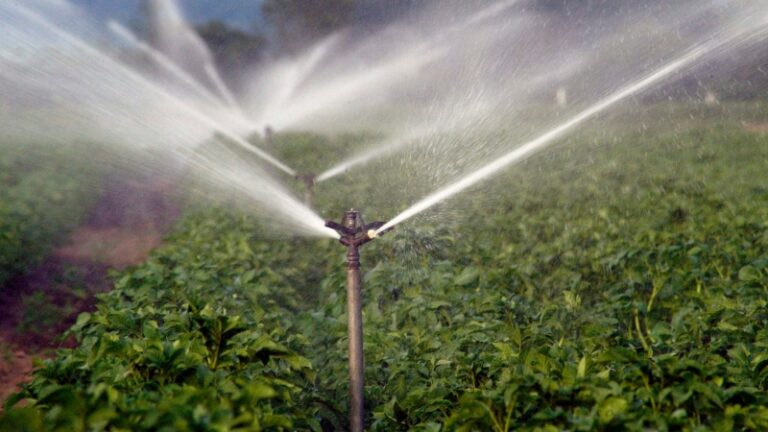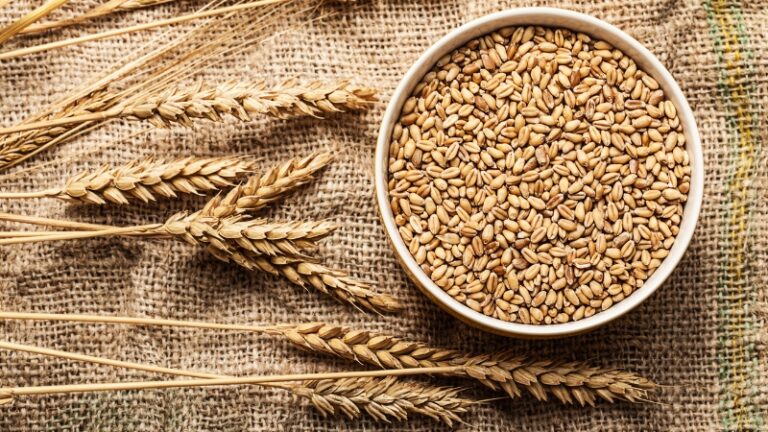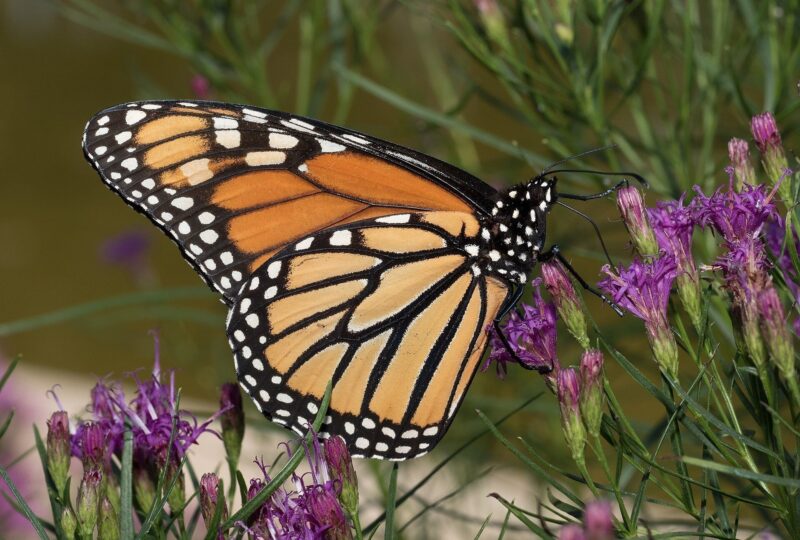Pollinators play an essential role in sustaining ecosystems and ensuring food security.
Bees, butterflies, hummingbirds, and other beneficial creatures fertilize plants, which in turn produce fruits, vegetables, and seeds.
Creating a pollinator garden serves two vital purposes: it supports ecological balance and adds abundant beauty to any outdoor space.
Garden Planning and Design Foundations
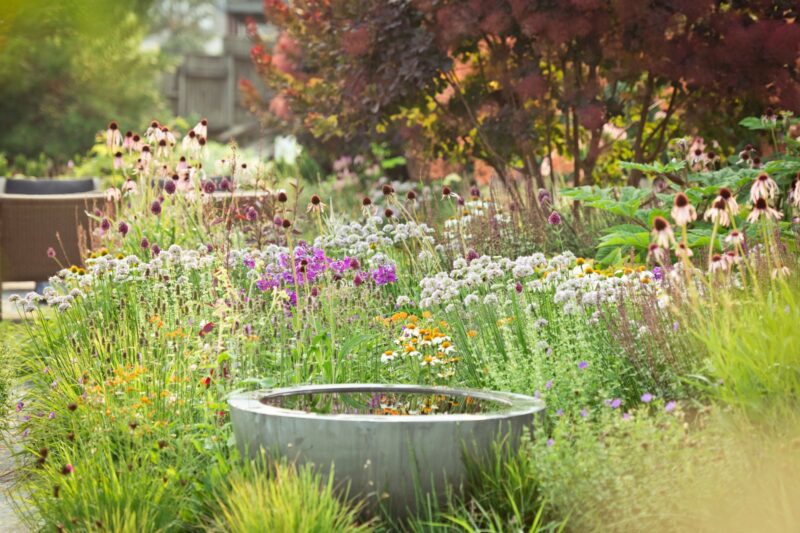
Laying a strong foundation begins with thoughtful evaluation. Every space, no matter how small or large, offers a set of conditions that shape what can grow and thrive.
Planning with care ensures that a pollinator garden flourishes and provides consistent resources for bees, butterflies, hummingbirds, and other beneficial species.
Careful attention to environmental factors and clear goals set the tone for long-term success.
Assessing Your Space
Pollinators rely on sun-loving plants that produce abundant nectar and pollen. Most of these plants require full sunlight, six to eight hours of direct exposure daily.
Observing how sunlight moves through your space helps position beds and containers effectively. Southern and western exposures tend to receive the most light, while north-facing areas are more shaded.
Soil condition plays a major role in plant health. Conducting a basic soil test with an at-home kit or through a local extension office reveals important details about pH levels, nutrient composition, and texture.
Based on those results, gardeners can match their plant choices accordingly, ensuring stronger root systems and greater flower production.
Wind and water access also shape how well a garden supports pollinators.
Open areas with constant wind may dry out too quickly or discourage insects. Installing hedges or using existing structures like fences and walls helps buffer harsh breezes.
Watering should be convenient and reliable to ensure blooms remain consistent even in dry seasons.
Key factors to evaluate before designing your garden:
- Sunlight exposure: Identify areas with at least six hours of direct sun.
- Soil type: Determine pH, drainage, and texture (sandy, loamy, or clay).
- Wind exposure: Locate areas that need protection with shrubs or fencing.
- Water access: Plan for irrigation or easy hose reach during dry spells.
Setting Your Intentions
Every garden benefits from a defined purpose. Deciding how the space will function, productive, ornamental, or a mix, guides plant choices and layout.
A garden can yield herbs, fruit, and vegetables while supporting pollinators with flowers that bloom in waves throughout the seasons.
Combining visual and functional goals adds structure and beauty. Selecting plants that bloom at different times keeps the space vibrant and continually active with pollinators. Adding layers enhances both productivity and aesthetics.
Taller shrubs or small trees offer canopy-level blossoms, while mid-level perennials and low groundcovers fill in gaps.
Clarity of purpose leads to thoughtful plant selection and spatial organization. Resilient gardens emerge when species are arranged not only by height but also by bloom time and ecological role.
When setting intentions, consider:
- Functional goals: Do you want edible yields, visual beauty, or both?
- Seasonal progression: Choose plants that bloom in spring, summer, and fall.
- Structural layering: Combine groundcovers, mid-height perennials, and shrubs.
- Pollinator activity: Plan for continuous nectar and pollen throughout the year.
Key Elements of a Pollinator-Friendly Garden
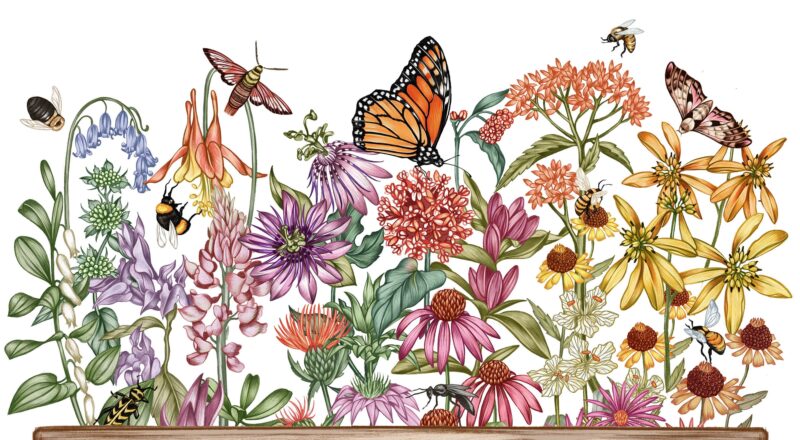
Building a garden that truly attracts and sustains pollinators requires thoughtful choices rooted in plant diversity, regional suitability, and chemical-free care.
Every element plays a role, flower shape, plant layering, seasonal progression, and maintenance practices all contribute to creating a safe, thriving environment for:
- Bees
- Butterflies
- Hummingbirds
Diverse Plant Selection
Pollinators vary in behavior, size, and feeding mechanisms. Designing a garden that meets a wide range of needs means selecting flowers of various shapes and colors.
Tube-shaped blossoms cater to hummingbirds, while open, clustered flowers are ideal for butterflies and bees.
A layered planting approach brings structure and improves habitat value. Arranging plants by height, from ground covers to small trees, offers shelter and varied nectar access.
Seasonal bloom succession is critical. Continuous floral availability throughout the growing season guarantees food sources during early, peak, and late periods.
Key features to prioritize:
- Flower shapes: Tubular, bell-shaped, and flat clusters
- Color range: Blue, red, orange, yellow, purple, and white
- Plant structure: Ground covers, low perennials, mid-height shrubs, and taller tree species
- Bloom timing: Include spring ephemerals, summer staples, and late fall nectar providers
Native Plants and Perennials
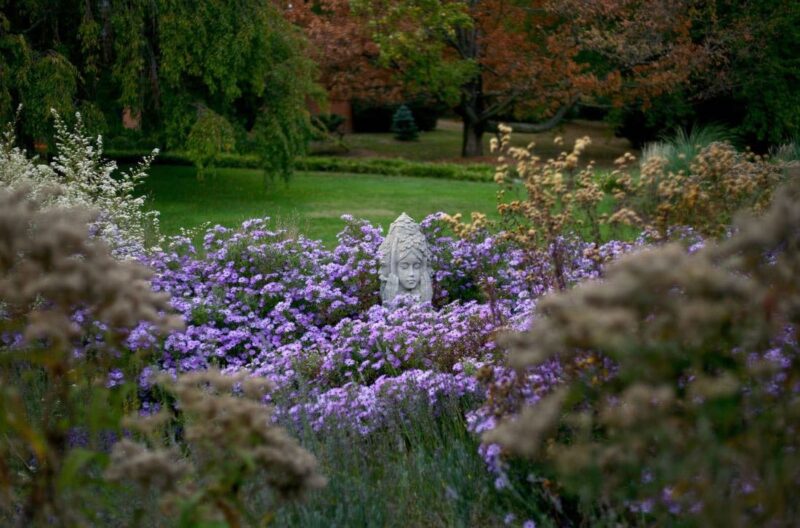
Plants native to a given region tend to require less attention and input.
These species have evolved alongside local pollinators, making them highly beneficial to bees, butterflies, and beneficial insects that rely on familiar food sources and habitats.
Coneflowers, milkweed, and goldenrod are not only visually striking but also provide essential nutrients during different points in pollinator lifecycles.
Long-lived perennials return year after year, creating consistency and habitat stability.
Local extension programs and native plant societies often provide reliable information to help identify the best species for a given location.
Key reasons to use native and perennial plants:
- Lower maintenance: Reduced watering, fertilizing, and care
- Better habitat support: Ideal food and shelter for local wildlife
- Seasonal reliability: Plants return annually with minimal replanting
- Increased resilience: Better adapted to regional pests, diseases, and climate patterns
Avoiding Harmful Chemicals
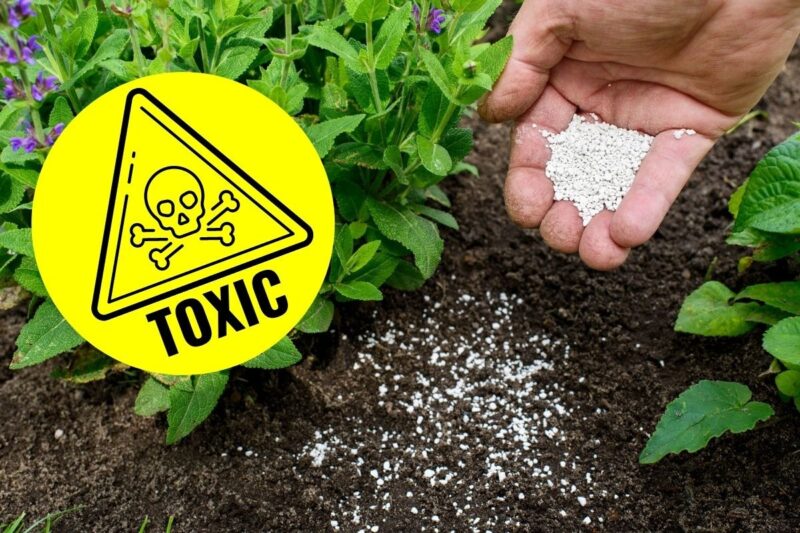
Synthetic pesticides, herbicides, and fertilizers introduce long-term damage to pollinator populations.
Neonicotinoids, in particular, have been linked to disoriented bee behavior and colony collapse. Even products marketed as “safe” often impact insects indiscriminately.
A shift toward organic methods not only safeguards pollinators but also promotes healthier soil and plant life. Gardeners who invest in manual weed control, composting, and integrated pest management find success without harming the ecosystem.
Encouraging natural predators, like ladybugs, lacewings, and certain bird species, adds another layer of biological control, helping the garden regulate itself over time.
Practical chemical-free methods:
- Avoid neonicotinoids and glyphosate products
- Use mulch and dense planting to suppress weeds
- Employ beneficial insect releases or companion planting
- Apply compost and organic matter for healthy soil biology
- Hand-remove invasive or diseased plants before they spread
For more information on sustainable practices and products that support ecological balance in garden and pond environments, find on this site.
Productivity: Growing Beauty and Bounty
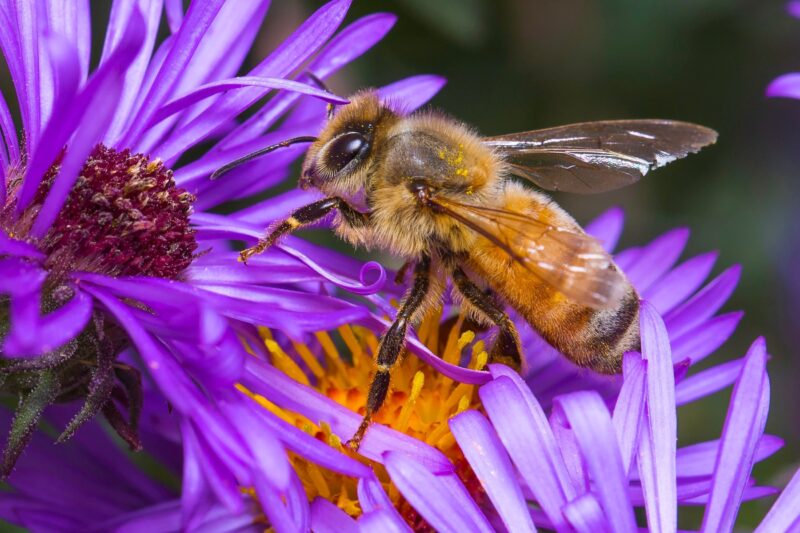
Designing a pollinator garden doesn’t mean choosing between productivity and beauty. Both goals can coexist by introducing edible plants that also support pollinators—an inspiring way to reclaim your outdoor space with color, purpose, and ecological impact.
A well-balanced garden feeds the household while drawing bees, butterflies, and birds to help maintain ecological balance.
Strategic combinations of fruits, herbs, and vegetables enhance visual interest and ensure year-round activity in the space.
Edible Landscaping Concepts
Combining edible plants with flowering species brings utility and color together. Fruit-bearing trees, such as apples and cherries, offer spring blossoms that attract pollinators, followed by edible yields later in the season.
Berry bushes like blueberries, raspberries, and blackberries play a similar role, serving wildlife while providing a seasonal harvest.
Groundcovers offer multi-functional value. Thyme, creeping rosemary, and lavender cover bare soil, suppress weed growth, and continually attract bees and butterflies with their blooms.
Herbs add even more depth. Their blooms support beneficial insects while leaves serve culinary needs. Planted among vegetables, herbs increase garden efficiency and support plant health.
Examples of dual-purpose edible and flowering plants:
- Fruit Trees: Apple, cherry, plum
- Berry Bushes: Blueberry, raspberry, blackcurrant
- Groundcovers: Thyme, creeping rosemary, lavender
- Herbs: Basil, dill, chives, oregano
Plant Pairing for Function
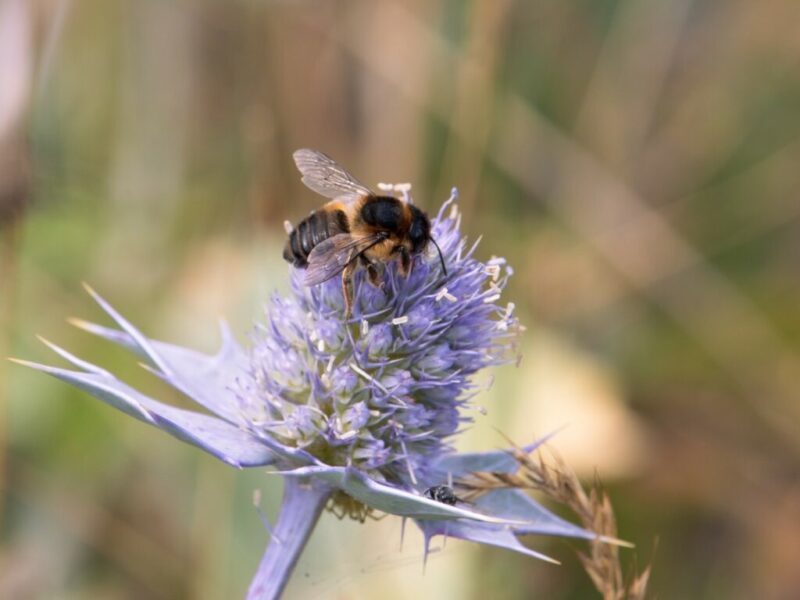
Some plants naturally support others by improving soil, deterring pests, or drawing in beneficial insects. These companion pairings reduce the need for synthetic pesticides and create stronger plant communities.
Marigolds, for example, emit compounds through their roots that repel nematodes. Their flowers also deter many flying pests. Nasturtiums serve as a sacrificial crop, aphids flock to them rather than to tender vegetables. Calendula draws hoverflies and ladybugs, which feast on pests.
Flowering shrubs add long-term structure while producing food and supporting pollinators. Serviceberries and elderberries begin spring with clusters of blooms that draw bees and end summer with berries for humans and birds alike.
Functional plant pairings to try:
- Marigolds with tomatoes or beans
- Nasturtiums near cucumbers and squash
- Basil with tomatoes or peppers
- Calendula to support pollinator and predator insects
- Serviceberries or elderberries in mixed borders
Summary
A thoughtfully created pollinator garden offers more than seasonal color, it supports vital insect and bird populations that sustain life. Even the smallest green space contributes to restoring ecological balance.
Gardening becomes more than a pastime, it evolves into a meaningful relationship with the natural world. Observation, trial, and seasonal adjustment lead to a more successful and resilient habitat.


